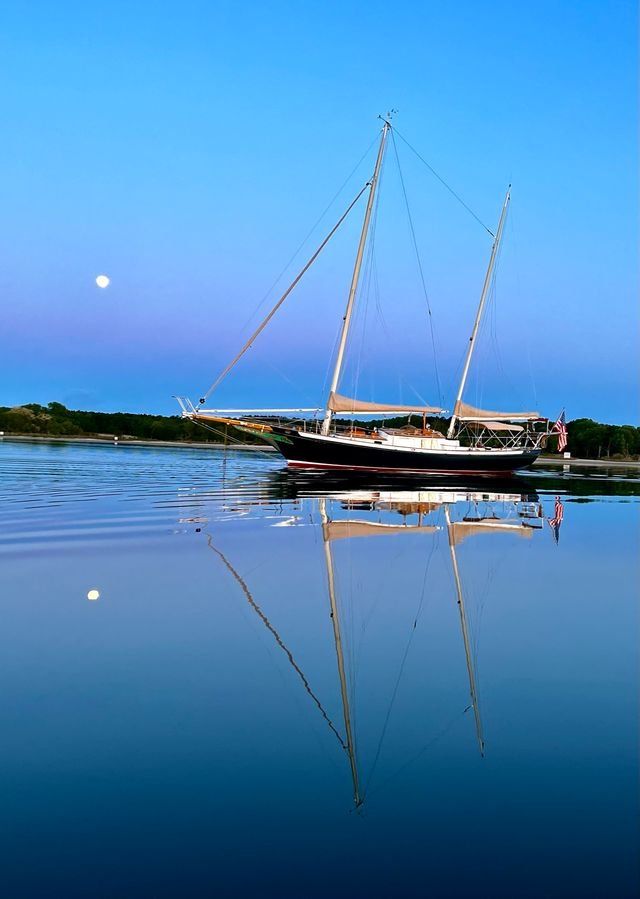The Story of Wind Song
Wind Song was the ultimate dream boat of a Chesapeake Bay sailor named Bill Kay. Bill trained as a naval architect/marine engineer until his senior year in college, when he switched his major to Mechanical Engineering because he thought it might make him more employable in post-war America. Wind Song was his last boat, and he died about a month after we bought her from him.
Wind Song's design was based on the Chesapeake Bay "bugeye" oyster-dredging ketches of the 1800's. These boats, which were typically 60-80 feet long, were shallow draft, internally ballasted, centerboard-equipped sailing vessels, usually double-ended, with bottoms made of rough-hewn, cross-bolted logs, and with plank-on-frame sides built up from the log bottom, which was typically 9 to 13 logs wide -- always an odd number, so the centerboard would not be located between logs.
To provide more working space aft, a so-called "patent stern", consisting of a rectangular platform built on top of the pointed aft end of the hull, was added in many cases. This also served as a base for the large, distinctive davits that served as a hoist for the yacht tender. The bugeyes themselves were not mechanically powered even in recent years, since, as oyster populations have diminished, it is now illegal to oyster-dredge under power in the Chesapeake.
The vessels were usually equipped with an outboard rudder on a slanted axis, as shown in the sketch. This gave the bugeye a rather severe weather helm, about which more later. The sail plan was invariably a spreaderless marconi ketch with a half-club self-tacking jib on a long "hogged" (slightly downward-curving) bowsprit. Photos of the Edna E Lockwood and the JC Armiger bugeyes are shown below.
Wind Song 's current dimensions are 52'6" overall including bowsprit and dinghy davits, 38' on deck, 30' on the waterline, 10'6" wide, and 3'2" deep unloaded with centerboard retracted, 7' with it extended. With the dinghy on the davits she grows to 54'. Loaded for cruising she'll draw about 3'4".
She was designed by Bill Kay. The engineering drawings were accomplished by Kaufman and Ladd in Annapolis, MD. She was laid up in solid fiberglass over a male frame-mold (see photos below).
The layup began with a commercially available scrim called SeaFlex laid onto the upside-down mold and tacked in place. SeaFlex consists of longitudinal stringers of cured fiberglass/resin composite each roughly 1/2" wide by 1/10" thick, held together by a loose crossweave of dry glass fibers. After this material was in place, glass/resin layup proceeded outward to half the design thickness. The whole mess was then flipped right side up, the mold removed, and the inside layup completed. The inside of the hull was left rough and painted, while the outside was ground smooth, faired with putty, sanded smooth, and then painted.It all begins with an idea.








